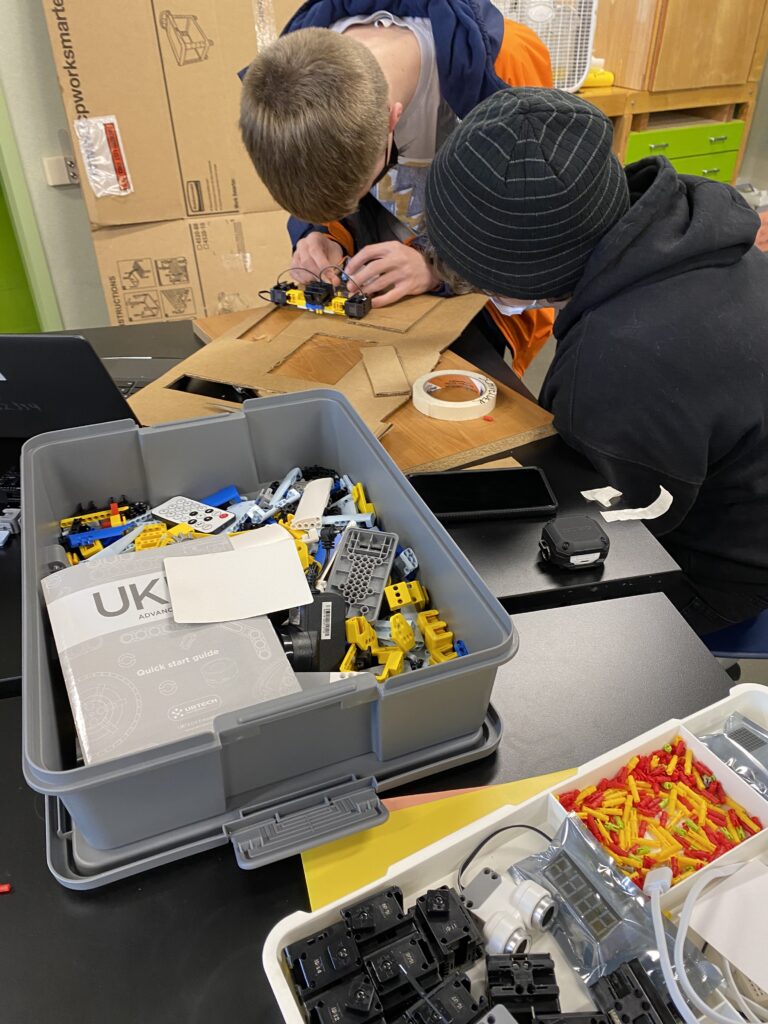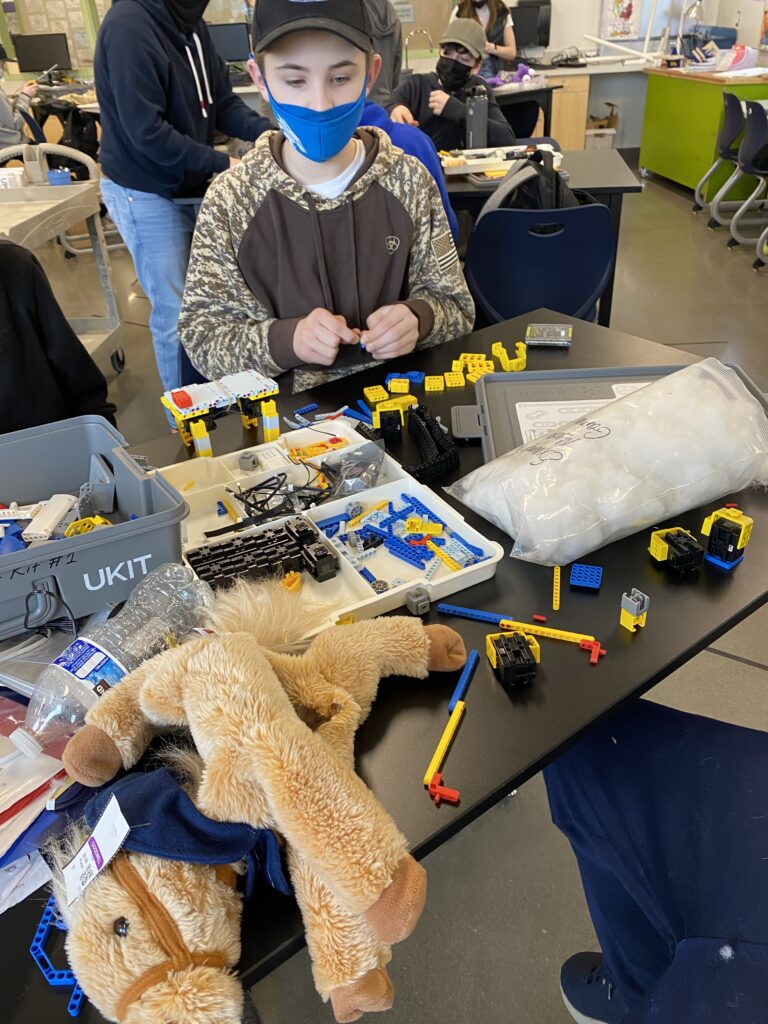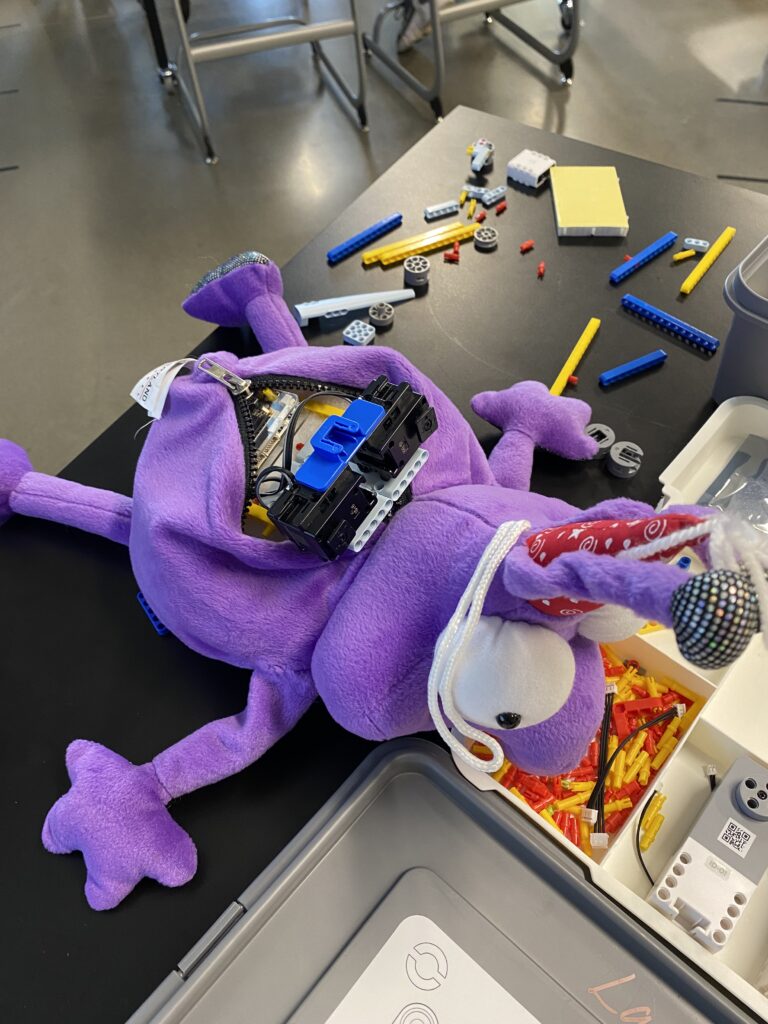Teacher Ambassador Program: UKITs in the Classroom – Kristy Schneider
Kristy Schneider, a Teacher Ambassador for UBTECH Education and STEM teacher with La Center School District in Washington State has a unique approach to using UKITs with her students. We’ve learned a lot from her about building creative programs with our UKITs.
Currently, her sixth through eighth-grade students are using the UKIT Advanced. Some, but not all of her students have backgrounds or experience with coding and/or robotics. Her approach is perfect for piquing the interest of students regardless of background or skill level.

With this group, Kristy decided to create her program, an Animatronics project. Using the UKIT Advanced as the skeleton, students turn a stuffed animal into a robotic creation that moves and interacts like a real-life animal.
Kristy developed this project after looking for more challenging ways to engage middle school students with STEM while meeting Washington State’s computer science standards. With the UKIT Advanced, she was able to design a program that incorporates multiple disciplines (robotics, electronics, art, script writing) while having students work through the engineering design process to solve the overarching problem.
To get started, students first pick a recycled stuffed animal that they have brought in or that Kristy has purchased at local thrift stores. They then extract the stuffing and replace the inside with servos, sensors, and UKIT pieces, all with the goal of turning the toy into more than a stuffed animal.

Kristy introduces the lesson/task at the beginning of each period and then has the students set their own pace to meet milestones and objectives. As long as they are progressing and continually iterating, then they are considered successful. The project uses a basic rubric that gives students credit for constructing the robot, then guides progression to coding and further iteration to customize the animal movements. Areas that incorporate other disciplines like art and writing are spread out throughout the entire project.
Collaboration and self-driven problem-solving are important aspects of the program. From designing and building the animatronics to troubleshooting, her goal is to empower students to drive their own learning.
“If we are having challenges we all discuss the problem and work on solving it together,” Kristy said regarding her self-described perspective as a strong supporter of student-led discovery. “Believe me, I learned along with my students in a very collaborative manner. We have so much fun even if everything doesn’t go well and we are stuck on a problem.”
Even though her approach to using robotics is unconventional, she’s seen her students advance on multiple levels. “The lessons that I’ve developed incorporate technology, art, drama, music, and videography. Students have increased their building, programming skills, and problem-solving skills.”

So far, Kristy says she has seen students who otherwise had little interest in robotics developing detailed stories around animatronic animals. To present the completed project, students write scripts and stories which they turn into videos and performances. This tested formula can be applied to many classrooms that want to bring STEM to students in an unconventional way.
Kristy’s advice to STEM teachers that may be interested in creating a different approach to using robotics and STEM is simple. “Don’t feel like you need to know a lot about robotics in order to use the kits. Jump in and learn with your students. Start with a small project and then expand to another. I’m always learning as much as the kids.”
If you’re interested in learning more, reach out to UBTECH Education.